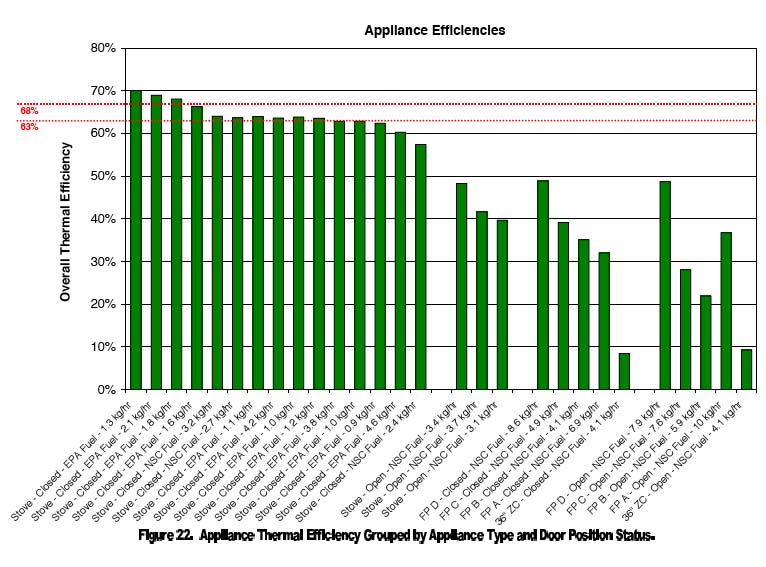Efficiency
3/6/15
|
Rumford fireplaces are high intensity radiant heaters as described by ASHRAE. They work best in large, open, rooms with high ceilings - even outdoors. Rumford fireplaces provide an efficient means of delivering thermal comfort directly to people and surfaces such as floors and walls without having to condition the entire space. Highly efficient thermal comfort can be delivered because radiant heaters focus thermal energy, and therefore thermal comfort, directly on the occupants, rather than controlling room temperature as do other heating systems. Determination of the amount of heat required to accomplish a desired heating level for any space relies upon an estimation of the space heat loss. The desired inside temperature when using a radiant heating system can be about 10 deg.F lower than one for a conventional warm-air heating system to achieve the same level of thermal comfort. With lower indoor air temperatures, the home's insulation works more efficiently and there is less heat loss through the building envelope. Adequate ventilation is also less expensive in a radiantly heated space because the fresh outside make-up air doesn't have to be heated up as much. For both reasons - 1. efficient means of delivering thermal comfort and 2. equal confort at lower air temperature - radiant heating Rumford fireplaces are effective and efficient heaters compatable with good ventilation. For the calculations and more detail see the Physics of Radiant Heat |

|
Explanation: The graph shows EPA certified stoves to have an average efficiency of about 63% - the default number. Masonry fireplaces tested between 20% and 50% efficient whether they were tested open or with closed glass doors. The one "zero-clearance" metal fireplace tested lowest at 7% efficient - again with or without doors. Room for Improvement: The scatter might indicate that there is a lot of room for improvement in fireplace efficiency. Fireplaces have not been tested for efficiency very often. I think clean-burning fireplaces probably will be about 63% efficiency - just as clean-burning stoves are. Methodology: While the study compares the efficiencies of various fireplaces and stoves, it only tells half the story - maybe not even half. The method used to test for efficiency is called the "flue gas loss method". The energy lost up the chimney, which can easily be determined by the volume and temperature of the flue gasses, is deducted from the total energy known to be in the fuel burned. All the rest of the energy is assumed to be useful. Heat Transmission: That doesn't address the vast differences in the way the heat is transmitted - or even if it's transmitted. How much heat is wasted into the brickwork if the chimney is outside the house? How much heat is wasted when cold air is sucked down the chimney to cool a light weight air cooled metal chimney? In what situations would the heat be delivered more effectively radiantly or by convection? How does the air lost up the chimney relate to the ventilation system?
The amount of heat transferred by infra-red radiation versus heat transferred by convection and/or conduction is small. The actual amount of matter heated by infra-red (ie, what you feel on your skin) is very small but because it gets delivered directly to your skin it is many times more effective. It gets heat exactly where it is needed and most easily absorbed and sensed by humans. - TiegsSummary: Fireplaces - even cheap poorly designed fireplaces - are not negatively efficient, as some would contend. In fact there is reason to believe fireplaces can be as efficient as other wood-burning appliances and can meet level-playing-field efficiency standards.
|
<< Back to Emissions -
Forward to Ventilation >>
Back to Green Fireplaces

Buckley Rumford Fireplaces
Copyright 1995 - 2015 Jim Buckley
All rights reserved.
webmaster